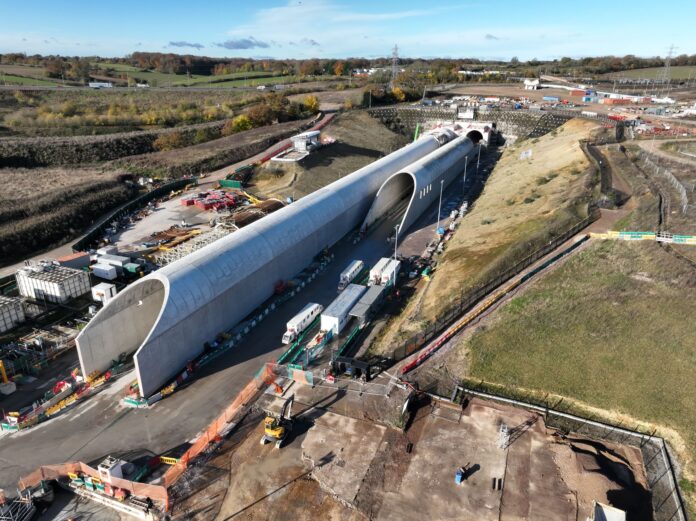Innovative engineering on the HS2 high-speed rail project has reached a significant milestone with the completion of unique extensions to the southern portal of its longest tunnel. These structures are specifically designed to eliminate the potential for a ‘sonic boom’ effect caused by trains entering the 10-mile Chiltern Tunnel at speeds of up to 200mph.
The extensions, located at the southern entrance of the tunnel north-west of London, are mirrored by near-identical structures currently under construction at the northern portal in Buckinghamshire.
Experts explain that all trains entering tunnels displace air, generating energy pulses that travel along the tunnel and can result in a release of air pressure at the exit. While these ‘micro pressure waves’ are typically inaudible on conventional railways, the high speeds involved in HS2 could, without mitigation, cause powerful pressure waves to emerge as a noticeable ‘thud’ or ‘sonic boom’.
In a first for the UK rail network, HS2’s design incorporates extensions on all eight tunnels where trains will enter at speeds exceeding 140mph. However, the sheer length, surrounding environment, and aesthetic considerations of the portals at either end of the Chiltern Tunnel set them apart as uniquely tailored even within the broader HS2 project.
HS2 Ltd chief engineer, Mark Howard, elaborated on the specific challenges posed by the Chiltern Tunnel:
“The maximum speed of HS2 varies along the route. But where the train is entering a tunnel travelling above 140mph we are building portal extensions to prevent ‘sonic boom’ occurring. Although there are several tunnels on the line where train speed will be higher than in the Chiltern Tunnel, no other combines speeds of 200mph with length of 10 miles. Its these unique physical characteristics that demand unique structures at each end.”
The phenomenon of ‘sonic boom’ from high-speed trains entering tunnels was first identified in 1974 during testing of Japan’s Shinkansen line. The initial solution involved perforated portals extending from the tunnel entrance. Later, as train speeds increased further, the focus shifted towards enhancing train aerodynamics to manage the build-up of pressure. This led to the development of the sleek, elongated noses characteristic of Japanese high-speed trains.
Building on over four decades of international research, the engineering team from HS2 Ltd, in collaboration with Arup, the University of Birmingham, and Dundee Tunnel Research, developed and rigorously tested HS2’s bespoke tunnel portal design in the laboratory.
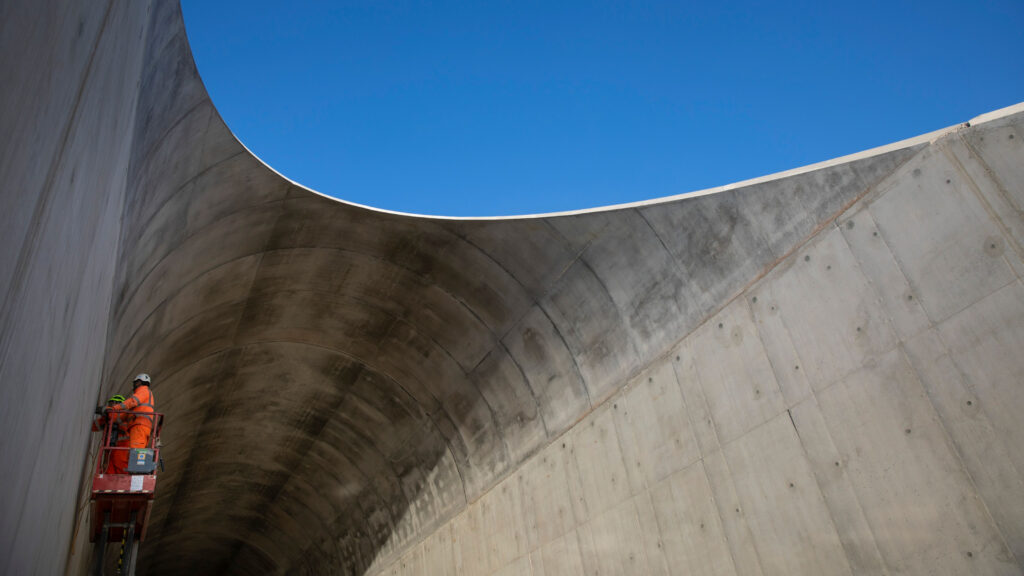
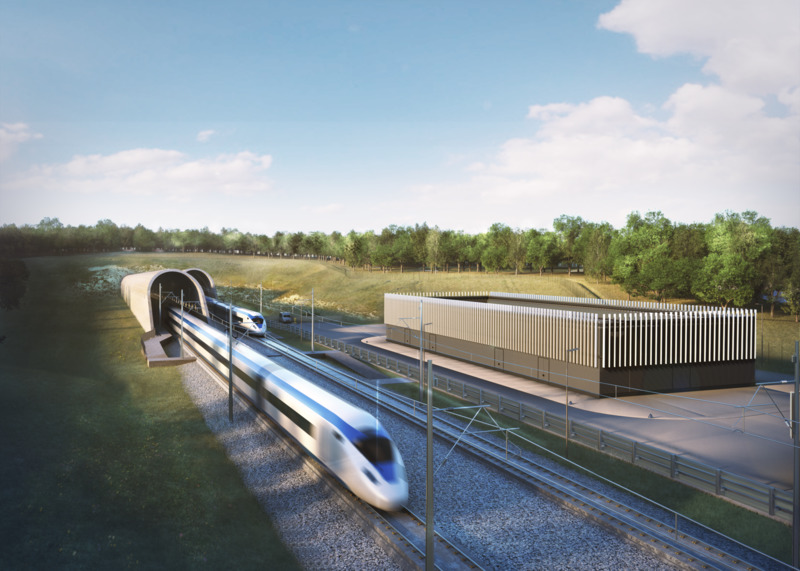
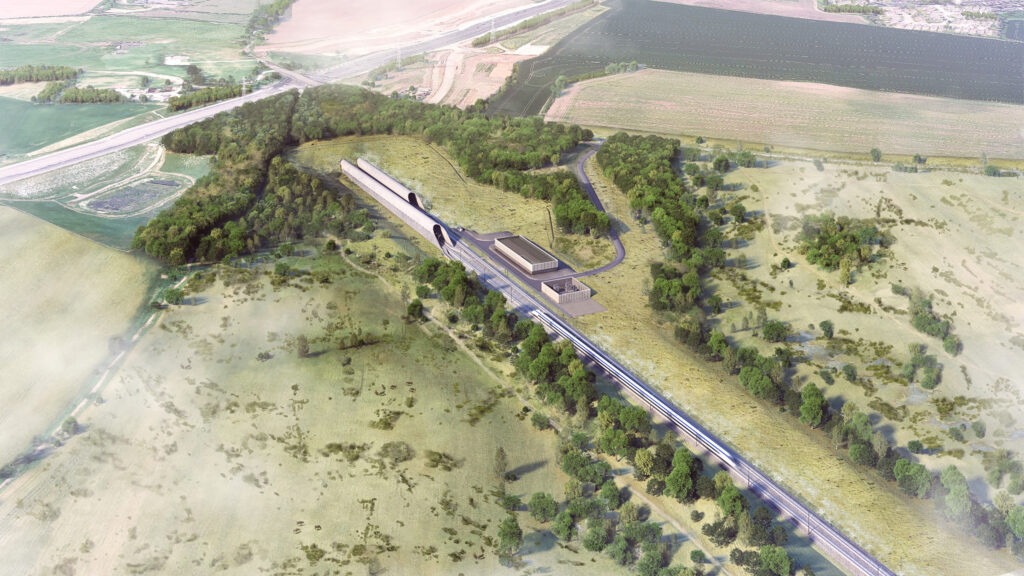

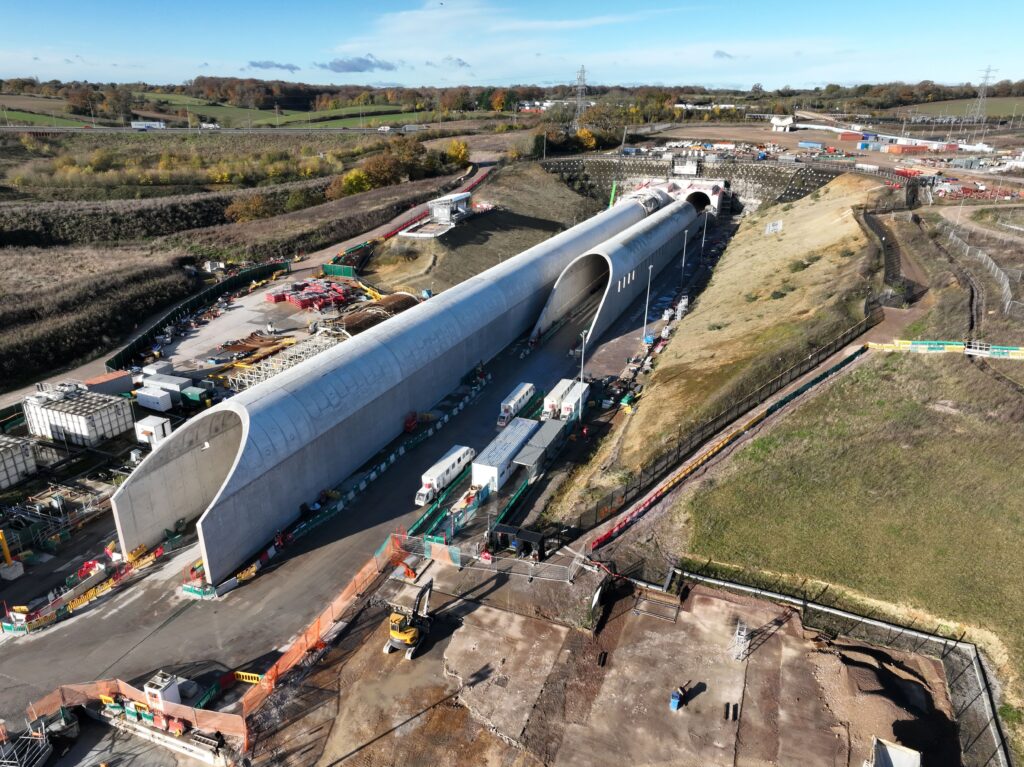
To effectively counter the ‘sonic boom’ risk in the Chiltern Tunnel, the resulting portal extensions are substantial, protruding up to 220 metres – roughly the length of two football pitches – from a chalky cutting near the M25 motorway. Each extension features ventilation portholes along one side, allowing some of the air pushed ahead by the train to escape. This gradual release of pressure ensures that the micro-pressure wave emitted at the far end of the tunnel remains undetectable.
The fundamental design is adaptable, with the length of the extension directly influencing the strength of the micro-pressure wave. To determine the precise length required for each HS2 tunnel, the team used micro-pressure wave measurements from Britain’s first high-speed line, HS1 (the Channel Tunnel Rail Link), as a benchmark. The tunnels on HS1 do not experience sonic boom due to the weakness of the micro-pressure waves, making it an ideal model for developing the anti-sonic boom porous tunnel extensions for the new London-West Midlands line.
Mr Howard further explained the integrated approach to HS2’s design:
“HS2 was designed from the ground up as an entirely new and complete rail system. This enabled us to develop all its constituent parts e.g. trains, tunnels, stations, power systems to complement each other and operate as intended.
“In the case of avoiding sonic boom at tunnel portals, we used already-established key criteria including train speed, tunnel diameter and length to develop tunnel portal extensions that would prevent sonic boom occurring.”
Arup Fellow Richard Sturt highlighted the innovative nature of the HS2 solution:
“Arup is proud to have helped create a new international benchmark for the suppression of sonic booms with the HS2 tunnel portals. They are longer than any existing portals anywhere else in the world as we have prioritized seating capacity on the train, avoiding the need for a long nose section on the train like the Japanese shinkansen. The portals’ unique tapered design combined with the precision-sized holes provide an incredibly smooth build-up of pressure as the train enters the tunnel. As a result, there won’t be any audible noises from micro pressure waves, despite the extremely high train speeds.”
The construction of the Chilterns Tunnel and its portal extensions was led by HS2’s main works contractor Align JV, a partnership comprising Bouygues Travaux Publics, Sir Robert McAlpine, and Volker Fitzpatrick. The southern portal extensions were completed in January 2025, with the northern counterparts expected to be finished in the autumn.
Once operational, passenger trains will traverse the 10-mile Chiltern Tunnel in a mere three minutes, a testament to the high-speed capability that these innovative portal extensions are designed to protect from unwanted noise.

